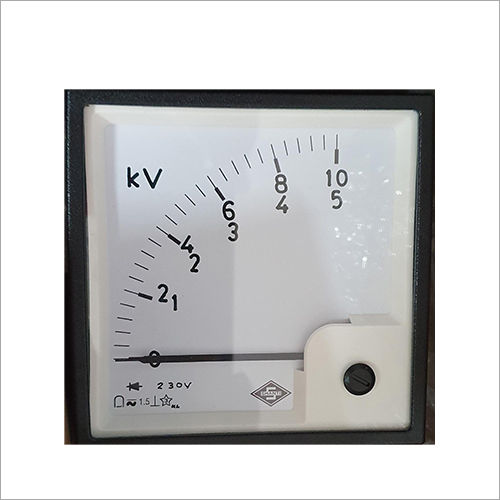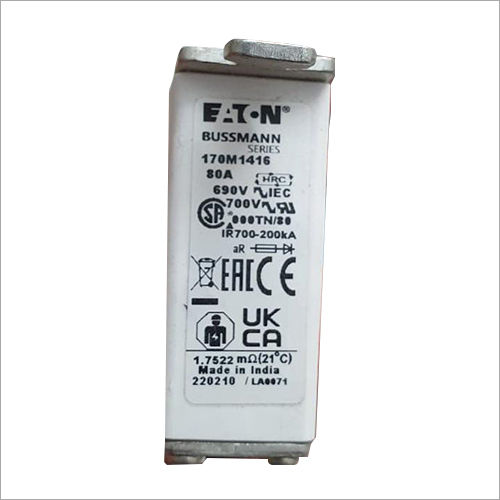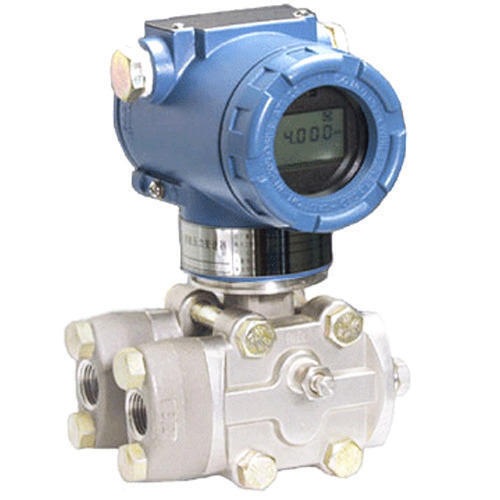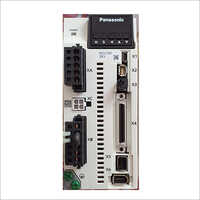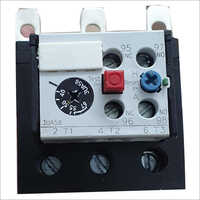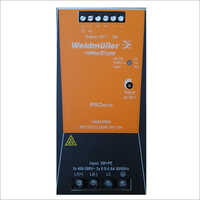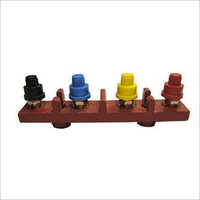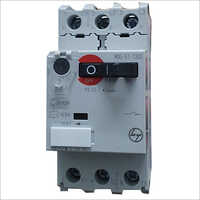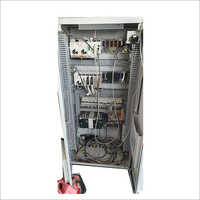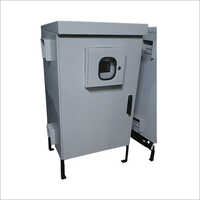Kolkata, India ![]() GST No.19BCBPR7038D1ZJ
GST No.19BCBPR7038D1ZJ
Call us now
08045802757Limit Switch
2500 INR/Unit
Minimum Order Quantity : 20 Units
Delivery Time : 10 Days
Size Different Available
Power Supply Electricity
Application Commercial
Supply Ability 5500 Per Month
Payment Terms Cash Advance (CA)
Main Domestic Market All India
About this product
A limit switch is an electromechanical device that physically activates a mechanical switch when specific predetermined criteria are satisfied. It can be used to detect the presence or absence of an object or to monitor the location of a moving part. It is frequently utilised in industrial applications for managing and keeping an eye on automated systems and machines.
Here are some of the main characteristics and duties of a limit switch:
1. A limit switch's basic components are an actuator, a switch mechanism, and electrical contacts, all of which are enclosed in a sturdy enclosure for protection. The object or moving component being controlled or monitored is intended to come into touch with the actuator.
2. Actuation: The limit switch's actuator is in contact with the item or moving component when it reaches a predetermined position or a physical limit. This actuation either physically opens or closes the switch contacts, activating the internal switch mechanism.
3. Limit switch contact configurations can be of different types, such as usually open (NO), normally closed (NC), or a combination of both. The electrical state of the switch when it is not triggered is determined by the contact configuration.
4. Depending on the application, the limit switch's internal switch mechanism may be either a mechanical lever or a plunger. The switch is mechanically activated while the actuator is in use, changing the state of the electrical connections.
5. Limit switches are typically used for position sensing, or determining whether or not an object is present. They can recognise the location of moving objects like doors, gates, conveyor belts, or machine parts and give feedback to machinery or control systems.
6. Limit switches are essential for maintaining safety and control during industrial processes. They can be used to identify abnormal circumstances in machinery, such as overtravel or misalignment, and then take the proper action, like as stopping the operation or sounding an alarm.
7. Limit switches have a wide range of industrial applications, including those in process control, robotics, packaging, material handling, and the automotive and manufacturing sectors. To enable precise control and automation, they are frequently utilised in conjunction with programmable logic controllers (PLCs) or other control systems.
Limit switches are adaptable tools that offer accurate and dependable position sensing and control in commercial settings. They can function in challenging situations and are reliable and simple to install. For optimum performance and safety, the limit switch must be properly chosen and installed depending on the application requirements.
kV Meter
1500 INR/Unit
Minimum Order Quantity : 20 Units
Delivery Time : 10 Days
Size Different Available
Power Supply Electricity
Application Commercial
Supply Ability 5500 Per Month
Payment Terms Cash Advance (CA)
Main Domestic Market All India
About this product
A kV metre, also called a kilovolt metre, is a piece of electrical equipment used to measure voltage in high-voltage systems in kilovolts (kV). It is made to precisely measure and show the voltage levels in high-voltage applications such electrical testing labs, substations, power transmission and distribution networks, and industrial facilities.
A kV meter's main characteristics and capabilities are listed below:
1. A kV metre is specifically made to measure high voltages, which are typically between a few kilovolts and several hundred kilovolts. In order to handle the high voltages present in the system being measured, it uses specialised voltage detecting circuitry and parts.
2. A kV metre may have a variety of voltage range options to accommodate varied voltage levels. It is crucial to pick a metre whose voltage range corresponds to the system's voltage levels. The precision of the voltage measurements is dependent on the accuracy of the kV metre, which is commonly expressed as a percentage of the full-scale range.
3. Display and Readout: To clearly display the measured voltage, kV metres typically have digital or analogue displays. Analogue metres have a pointer or needle that indicates the voltage level on a graded scale, while digital metres often have numerical displays.
4. Safety measures are frequently included in kV metres to protect the operator from the serious safety dangers associated with high-voltage measurements. This can include sturdy construction to handle the high voltages and dangerous electrical surges, shielded or guarded connectors, and insulated probes.
5. Additional Features: To increase their usability and adaptability, some kV metres may include additional features and functions. This can include features for detecting peak voltages, frequency measurement, AC and DC voltage measurement options, data logging options, and interface ports for connecting to other devices or transferring data.
6. KV metres come in both portable handheld versions and bigger benchtop ones, and both are available. While desktop devices offer more complex functionality and may be appropriate for laboratory or testing conditions, portable metres are practical for on-site measurements.
7. Maintenance and Calibration: To achieve accurate readings, kV metres should undergo routine maintenance and calibration much like any other measuring device. To keep the metre in good working order and preserve its accuracy over time, qualified staff must perform routine maintenance and calibration.
Utilising a kV metre that is rated and specifically intended for high-voltage applications is crucial. To reduce the danger of electrical risks and maintain human safety when working with high voltages, proper training and attention to safety measures are essential.
High Speed Fuse
1500 INR/Unit
Minimum Order Quantity : 20 Units
Delivery Time : 10 Days
Size Different Available
Power Supply Electricity
Application Commercial
Supply Ability 5500 Per Month
Payment Terms Cash Advance (CA)
Main Domestic Market All India
About this product
A high-speed fuse is a type of electrical protection device created to swiftly stop the current flow in the event of a fault or overload. It is also referred to as a fast-acting fuse or high-speed semiconductor fuse. These fuses are made primarily to guard delicate electronic components, such semiconductors or other high-speed circuits, from harm brought on by an excess of current.
Here are some essential qualities and traits of high-speed fuses:
1. Rapid Response Time: High-speed fuses have a quick response time, which enables them to identify faults and stop current flow in a timely manner. This quick-response quality helps shield delicate electronic components from thermal and electrical harm.
2. Current Limiting: Current-limiting features are frequently built into high-speed fuses. The fuse quickly reduces the amount of current flowing through the circuit when a fault occurs, preventing it from reaching dangerous levels and reducing the possibility of equipment damage or fire threats.
3. Small Form Factor: High-speed fuses frequently have tiny sizes that make it simple to integrate them into fuse blocks or circuit boards. They are useful for applications with restricted space because to their tiny form factor.
4. High-speed fuses are offered in a range of voltage and current ratings to accommodate a range of applications. It is essential to choose a fuse whose ratings match those of the circuit or piece of equipment it is protecting.
5. High-speed fuses are made with low resistance, low voltage drop, and high interrupting capacity in mind while they are being designed. These features guarantee effective current flow, reduce power loss, and enable the fuse to withstand high fault currents without being harmed.
6. Application: Fast response times and precise current protection are crucial in electronic circuits and power systems, where high-speed fuses are frequently used. They are used in a variety of high-speed electronic devices, including power supplies, motor drives, inverters, UPS systems, and solar systems.
It is significant to remember that high-speed fuses are designed for specific purposes and have unique properties. To ensure effective protection and the steady operation of the electrical system, it is crucial to take into account the system requirements, fault current levels, and coordination with other protective devices when choosing a high-speed fuse.
Digital Counter Meter
1800 INR/Unit
Minimum Order Quantity : 20 Units
Delivery Time : 10 Days
Usage Industrial
Type Electronic
Operate Method Semi Automatic
Exterior Material Stainless Steel
Color Black
Application Industrial
Supply Ability 5500 Per Month
Main Domestic Market All India
About this product
Electric Temperature Controller is an essential instrument in the field of electronics, instrumentation and control automation for measuring and controlling temperatures. Real time temperature is displayed on its LCD screen, and one can use it to control the temperature within the preset minimum and maximum range. It is developed with precision at our state of the art infrastructure unit in accordance with the illustrated parameters of the industry to attain highest benchmarks of quality. Our clients can avail from us this Electric Temperature Controller at most competitive rates.
Electric Lugs
200 INR/Unit
Minimum Order Quantity : 20 Units
Delivery Time : 10 Days
Size Different Available
Power Supply Electricity
Application Commercial
Supply Ability 5500 Per Month
Payment Terms Cash Advance (CA)
Main Domestic Market All India
About this product
Electric lugs, sometimes referred to as cable lugs or wire lugs, are electrical connectors used to terminate and connect electrical cables or wires to various electrical equipment, including transformers, circuit breakers, switches, and electrical panels. They offer the conductor and the equipment a trustworthy and secure connection.
What you need to know about electric lugs is as follows:
1. Construction: Conductive materials like copper or aluminium are frequently used to make electric lugs. They come in a variety of shapes, such as ring lugs, spade lugs, pin lugs, and butt connectors, and are made to fit particular cable sizes.
2. Electric lugs are terminated using a crimping or compression arrangement. A crimping tool is used to compress the lug onto the conductor after it has been fitted over the stripped end of the cable conductor to provide a secure and low-resistance connection. For further mechanical stability, some lugs could additionally include set screws or nuts.
3. Electric lugs may come with insulation or sleeves in some applications to offer electrical insulation and safeguard against unintentional contact or short circuits. To distinguish between different cable sizes or insulation types, insulated lugs are frequently color-coded.
4. Electric lugs come in a variety of sorts, sizes, and combinations to support varied cable sizes and uses. In order to provide adequate electrical contact and prevent overheating, the lug size should correspond to the cable size.
5. Ratings for Voltage and Current: Electric lugs have a range of ratings for voltage and current. To ensure secure and dependable operation, choosing lugs appropriate for the desired electrical system is crucial.
6. Power distribution, electrical installations, control panels, renewable energy systems, automobile wiring, and industrial equipment are just a few of the industries where electric lugs are used. They are utilised to build connections for control and signal wiring, link cables to power sources, distribute power throughout systems, and more.
7. Maintenance and Inspection: To guarantee the integrity and proper operation of electric lugs, routine inspection and maintenance are necessary. This entails inspecting for frayed wires, corrosion, or overheating symptoms, retightening or replacing lugs as necessary, and checking for loose connections.
For maintaining electrical safety and guaranteeing effective power transfer, proper installation and selection of electric lugs are essential. To create dependable and secure electrical connections when working with electric lugs, it's critical to adhere to manufacturer recommendations and industry standards.
Pressure Transmitter
25000 INR/Unit
Minimum Order Quantity : 1 Units
Delivery Time : 1-7 Days
Product Type Pressure Transmitter
Supply Ability 1000 Per Month
Main Domestic Market All India
About this product
In order to measure and send pressure data from a process or system to a control system or monitoring device, a pressure transmitter is utilised. It is frequently used to precisely monitor and manage pressure levels in a variety of industrial applications.
The main elements and characteristics of a pressure transmitter are as follows:
1. Pressure Sensor: A pressure sensor, also known as a transducer, is a component of a pressure transmitter that transforms the applied pressure into an electrical signal. This sensor may be based on silicon-based technologies, piezoelectricity, capacitance, strain gauge, or another principle.
2. Circuitry for Signal Conditioning: The circuitry in the transmitter processes and conditions the electrical signal produced by the pressure sensor. To provide precise and trustworthy pressure measurements, amplification, linearization, temperature correction, and filtering may be used.
3. Pressure transmitters produce an output signal that reflects the pressure that was really measured. The most popular output signals are digital (e.g., HART, Modbus, Profibus) or analogue (e.g., 4-20 mA or 0-10 V) signals because they are simple to integrate with control systems, data loggers, or other monitoring tools.
4. Range and Accuracy: Pressure transmitters may measure pressures between a few inches of water column (inH2O) and thousands of pounds per square inch (psi). In general, the accuracy of the transmitter is reported as a percentage of the full-scale range and describes how accurately it measures the real pressure.
5. Pressure Connections: To connect pressure transmitters to the system or process being measured, use their input and output ports. To meet various uses and pressure ranges, these ports can be different sizes and types (such as threaded, flanged, or sanitary connections).
6. Environmental Protection: Pressure transmitters may contain features to survive challenging environmental conditions, depending on the application. This can include defence against high or low temperatures, vibration, moisture, dust, and other elements.
7. Advanced pressure transmitters frequently have diagnostic features built in to track their operation and find errors or anomalies. These characteristics can improve maintenance scheduling and guarantee the accuracy of the pressure measurement equipment.
In numerous industries, including oil and gas, chemical processing, pharmaceuticals, water treatment, HVAC, and others, pressure transmitters are utilised extensively. They offer precise and immediate pressure measurements that facilitate effective process management, system monitoring, and safety.
Explore Additional Categories
Contact Us
 Our Products
Our Products 
